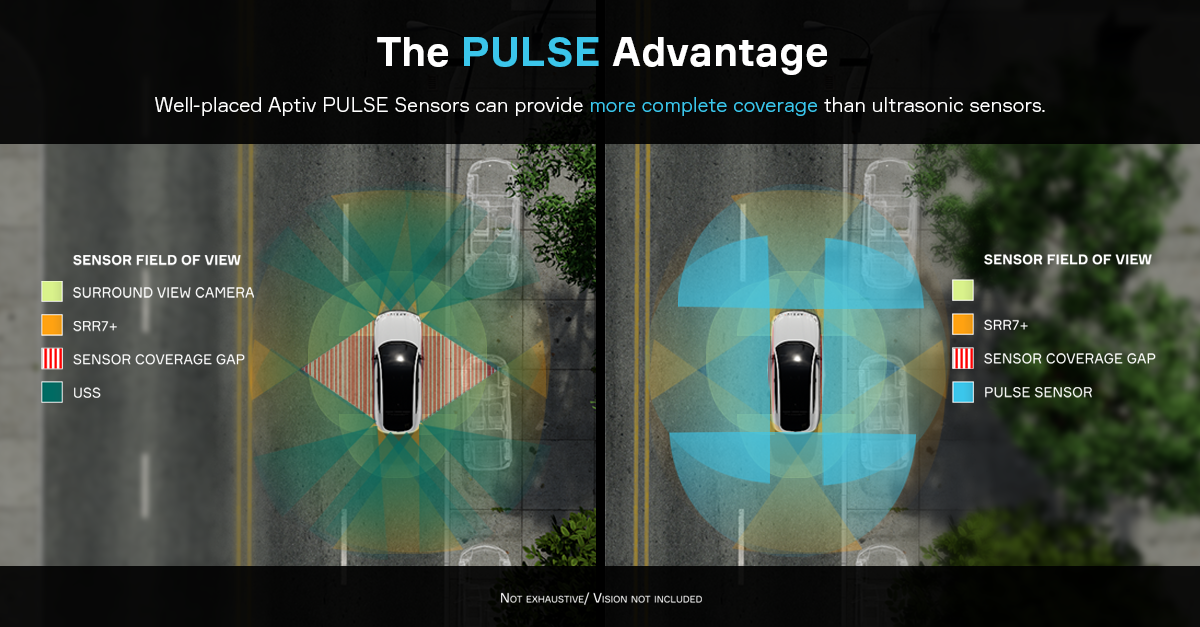Going a Step Beyond Ultrasonic Sensors
Ultrasonic sensors specialize in short-range detections of obstacles and are widely used in automotive applications to help ADAS perceive the world around a vehicle. But while they are useful, ultrasonic sensors also have limitations that could be addressed by emerging sensing technologies.
When it comes to mobility, ultrasonic sensors put the “bat” in Batmobile — they use the same echolocation technique as bats to navigate. Both send out high-frequency soundwaves that reflect off of objects to establish location and proximity. In this way, the sensors have helped drivers avoid bumping into nearby vehicles and other close obstacles for decades.
Colloquially called “buttons,” ultrasonic sensors are known at a glance by automotive designers. They may be overlooked by consumers, however, because they appear as relatively small dots color-matched to the bumpers and other body panels they are mounted within. A typical vehicle may have as many as 12 ultrasonic sensors installed to cover its perimeter.
Multiple sensors are required because a single ultrasonic sensor cannot resolve the angular position of an object on its own. To get a more accurate picture of the environment, an ultrasonic-based perception system must incorporate a constellation of sensors, using an algorithm to interpolate between their signals. While the resulting reconstruction of the vehicle’s surroundings may be adequate for some automated parking scenarios, the range of conditions under which it will work — its operational design domain — may be limited, and the speed of completion of a parking maneuver may be slower than desired.
In addition, ultrasonic sensors do not work well on vehicles moving at speeds above 35 mph. Because they use sound waves for detection, they are limited by the time of flight of those sound waves moving through the air, which is, of course, much slower than electromagnetic waves travel. They also have a lower refresh rate than is needed at higher speeds, lack doppler optimization (the ability to detect frequency shifts) and can suffer from signal interference in inclement weather. Finally — and unsurprisingly for a technology that relies on sound waves — loud noises in the vehicle’s vicinity, such as a jackhammer in use, can sometimes result in false detections.
While those limitations do not affect the low-speed functions that drivers rely on, such as parking-distance warnings, they leave an opening for a technology capable of higher precision and less vulnerable to interference.
Radar and cameras have both served to fill those gaps. Radar is far less subject to signal interference and environmental conditions, such as fog, and cameras offer detailed, full-color images, allowing accurate obstacle classification. The ideal solution is sensor fusion, which combines each type of sensor’s strengths. Using multiple sensing modalities has typically required separate hardware and wiring, which increases cost, weight and complexity.
Aptiv met this challenge by introducing the Aptiv PULSE™ Sensor, an innovative perception sensor that combines a camera and an ultrashort-range radar into a compact one-box, one-wire solution.

In a recent Q&A, Gabor Vinci, Aptiv’s head of business development for Active Safety and “the father of PULSE,” explained what makes PULSE so novel: “PULSE is a surround-view camera and a miniaturized radar integrated into the same housing. The important difference is that in addition to having an optical path that gives you an image, it allows you to perceive the environment with radar, so you have two sensing modalities in the same location in the vehicle.” This configuration provides overlapping strengths while reducing the amount of wiring needed. This results in lower costs and, importantly, lower latency, which can boost reaction time by critical milliseconds.
PULSE can match the short-range capabilities of ultrasonic sensors, but the radar component has better long-range capabilities, which — especially when combined with the camera component — can be used to usher in advanced driving functionality.
These innovations allow PULSE to help fulfill the dream of fully automated parking and give it the ability to safely navigate through dense urban environments, without its effectiveness being diminished by bad weather or other interference.
Despite their limitations, however, ultrasonics remain valuable for drivers. There are many situations where Batmobiles and other vehicles can still take advantage of well-established ultrasonic technology for the critical task of obstacle avoidance. With ultrasonic sensors, radars, cameras and now PULSE, OEMs have a range of choices when developing future models.